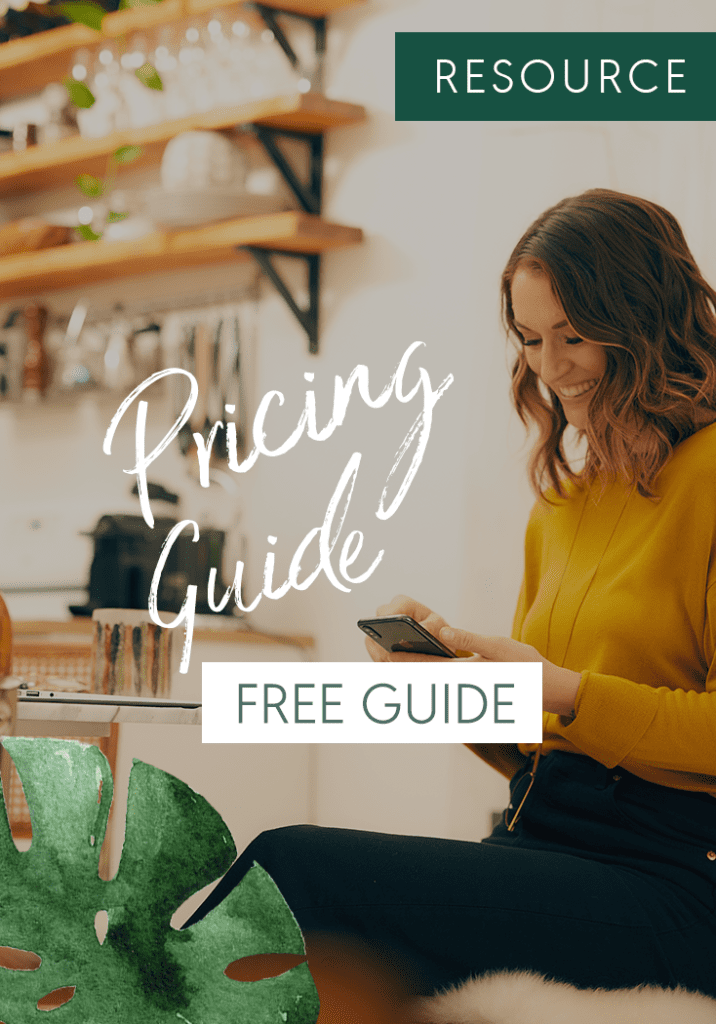
How To Know What To Charge (So You Don’t End Up Resenting Your Clients or Hating Yourself)
Let’s get to the point, yeah? MONEY.
You need it to have a business (otherwise you’re just running a REALLY time consuming hobby, which is cool if that’s what you want to do, but then don’t complain about not making any money).
When you’re first starting out, the money part of your business can be suuuuper stressful. You’re totally broke, so you’re frugal as hell and won’t even spend $10 on your business.
And at the same time, the thought of asking your clients for money is terrifying. You sound awkward and nervous and so not professional (and yes your clients can smell it).
And never mind the fact that even if you DID try to ask confidently, you have no idea what you should actually be charging.
So what’s a coach to do? Gotta spend money to make money, but gotta make money to spend money.
You have to start somewhere.
It’s like the chicken and the egg, except I doubt whether the topic has ever sparked any in deeper questions about how the world started.
I want to walk you through some of the most important things to think about when you’re just getting started with trying to figure out what the hell to charge.

READY TO PRICE YOUR SERVICES THE RIGHT WAY?
ENTER YOUR NAME AND EMAIL BELOW TO DOWNLOAD MY FREE PRICING GUIDE

READY TO PRICE YOUR SERVICES THE RIGHT WAY?
ENTER YOUR NAME AND EMAIL BELOW TO DOWNLOAD MY FREE PRICING GUIDE
Here’s what you need to think about when you price your services:
1. How long have you been doing what you’re doing?
If it’s your very first rodeo, I’d suggest doing it for free (yep, that’s right, I love working for free), so you can make sure you’re actually GOOD at what you do. Testing things out for free also takes the pressure off, AND lets you get valuable feedback and make the necessary tweaks to your service before you ramp up the price.
You can plan your offer behind the scenes all you want, but at the end of the day, it might just not work out the way you had planned. So testing your services for free is always a good way to start AND it usually means you set even higher prices at the end of your testing phase, because you are so much more confident in what you are doing!
2. What amount feels good to you?
Yes, this is a legit method of pricing. It doesn’t matter what anyone else charges (most people price their services based on their own insecurities about money anyway), you have to feel good about what comes out of your mouth when you tell your clients your prices.
At the end of the day, you can’t charge a number that makes you vomit when you say it out loud. If you price too high, higher than your level of confidence, you will never want to sell.
And you can’t price so low that you start to resent your work and your clients.
Choosing a number that feels good to you is mega important.
But I can’t stress enough that if you haven’t beta tested your services yet, and don’t have at least a 7/10 level of confidence in the results you can provide for someone – set your price to FREE and coach as MANY people as you can, til you get your results confidence up.
Then, follow the advice about about pricing in a way that feels like the sweet spot for you.
3. How much money do you want to make?
It’s almost SO obvious of a question that we often overlook it. When I stated my business while on a year long rock climbing trip, I decided that I wanted to make $250/month from my business. In fact, I decided I’d be STOKED if I made $250/month. I mean, I created something and people were paying me for it – at the beginning, that alone was incredible!
Don’t think about your long term money goals here. Look at the next year and decide how much you’d be thrilled to make. Choose a number that is realistic (ie. If it’s your first year of business and you have no prior marketing or business experience, I wouldn’t be gunning to make $150k next year).
If you want to make $30k, and your service is $100, you can then do some math and figure out how much you need to sell to meet your money goals.
Pricing your services doesn’t have to make you want to hide under a blanket. You should be able to tell your clients what you charge without feeling like a total fraud (and if you do feel like a total fraud, investing in more training or getting more experience is definitely your next step)
Remember, getting PAID is FUN. In fact it’s one of the funnest parts of business, because it not only lets you have the lifestyle you want, but it actually lets you have a bigger impact with your business by investing back into your work, so you can reach and help even more people.
Need help with pricing? Download our free Pricing Guide here.


So true, Rebecca!
Our pricing must feel good to us…thank you for the thoughtful reminder.
I just posted my new packages yesterday…feels exciting and exhilarating to just do it!
Wow. This is not the everyday, same ol’ “how to charge” stuff I’ve read for years. Love it!
Love it! ‘Getting paid is FUN’! HELL YEAH 🙂
Great stuff Rebecca – and hot on the heels of my new-found clarity (courtesy of a certain Nice Package…), this helps me find a happy place with my pricing. I proudly offer 28 days of creativity coaching via email for £175.
Value vs commodity markets. When you’re a bottom feeder starting out, you want to play in value markets. As the way to make money in commodity markets is by volume/a large number of sales, which almost always requires a large investment. A high class escort, a life coach, personal trainer, lawyer, accountant: all of them provide subjective value and thus can charge high fees that are completely arbitrary. A toothbrush or even a saturated & competitive service such as web design is a commodity. These guys explain it very well: https://www.udemy.com/highvaluesales/